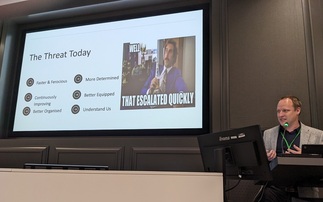Victims have paid out more than $25 million as a result of ransomware in the past two years
A new survey has revealed the monetary costs of the most recent worldwide ransomware attacks, by tracking payments through secure systems. Ransomware has become an increasingly common hazard in ...
To continue reading this article...
Join Computing
- Unlimited access to real-time news, analysis and opinion from the technology industry
- Receive important and breaking news in our daily newsletter
- Be the first to hear about our events and awards programmes
- Join live member only interviews with IT leaders at the ‘IT Lounge’; your chance to ask your burning tech questions and have them answered
- Access to the Computing Delta hub providing market intelligence and research
- Receive our members-only newsletter with exclusive opinion pieces from senior IT Leaders






















